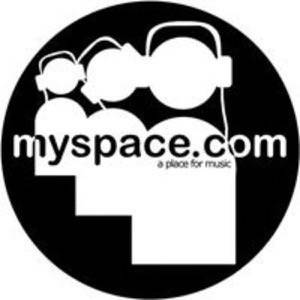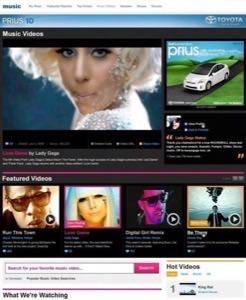Yesterday, amid all the news of Twitter’s arrival into both Microsoft’s Bing and the Google search engine, another major announcement was being made. MySpace is giving up on trying to be a major social network. According to MySpace CEO, Owen Van Natta, Facebook is no longer their competition. “We’re focused on a different space,” he says.

That “different space,” as it turns out, is music…and it really isn’t all that different, especially considering MySpace’s roots. If anything, this major overhaul of the social network is an attempt to return the site to becoming the popular entertainment hub it once was.
MySpace: Remember When it Was “A Place for Music?”
When MySpace hit the scene back in 2003, local bands – especially indie rock bands – were among the first to create profiles on the social network. Their presence immediately began to attract a young, hip crowd of users who were interested in following pop culture, and, in particular, the up-and-coming artists they discovered while browsing through the network. Only eight months after its launch, MySpace began to experience exponential growth, as its users created profiles and friended others who would then, in turn, invite more users to join the social network. Thanks to the “network effect,” MySpace soon became the place to be online. Everyone was there.

But at the same time that MySpace was having its heyday, another social networking site was being created. Although still in its infancy in 2004, a Harvard student named Mark Zuckerberg began writing the code for what would eventually become Facebook, now the world’s largest social network.
Over recent months, we’ve seen the mass exodus from MySpace to the more popular – and more populated – Facebook. Studies have shown that those left actively engaging on MySpace now tend to be younger, lower-income users. Researcher Danah Boyd pointed out, somewhat controversially, that the differences between the two networks, MySpace and Facebook, went further than age and income – they involved your “social class,” too.
Tired of being compared to Facebook in this way and certainly tired of hemorrhaging its users, MySpace CEO Van Natta has plans to turn the sinking ship around. After taking over the company six months ago, he’s been busy arranging new partnerships for the one-time king of social networks. These partnerships aim to bring the focus back to music, and less on socializing.
New Music Initiatives: iLike, Videos, Artist Dashboards
One of the most notable new initiatives involves MySpace’s iLike integration. After being acquired by MySpace in August, many wondered why iLike wasn’t becoming a part of the MySpace network. Actually it was, but Van Natta didn’t want to disclose that information at the time.
But now, the iLike acquisition is beginning to make sense. Through iLike music video widgets, now popular installations on other social networks like Facebook and Orkut, the videos – and, most importantly, their ads – can be streamed on other sites while the revenue generated returns to MySpace. Even though many of the users watching these videos now may be lost forever to MySpace, they’re helping the company regain its footing through their streams.
MySpace’s entire music video vault, one of the most popular features on the social network, has also been integrated with iLike. In August, comScore reported 45 million people watched 340 million videos during the course of the month. It only makes sense for MySpace to capitalize on that activity, which is why the company has now launched MySpace Music Videos, an online video archive where users can not only watch videos from their favorite artists, but with a click, purchase the song or ringtone from Amazon or iTunes. Meanwhile, pre-roll, post-roll, and overlay ads help to monetize the content.

In addition, to cater to the musicians, bands, and labels who make MySpace their home, the network has also launched “Artist Dashboards.” These online analytical tools track the fans’ demographics by age and location, the total number of plays per song, profile views and more. Every artist with a MySpace profile is given free access to these tools.

Is it Enough?
The question that remains, of course, is whether or not MySpace’s re-branding efforts will be enough to keep the site from going under. Although MySpace still had a healthy 64 million users in August of this year, that number is 12 million fewer than it did at the same time last year. Meanwhile, Facebook climbed to 300 million worldwide that same month.
Can MySpace entice people to come back to the network through its new music-based initiatives? It’s too soon to tell at the moment whether the strategy will work or not, but it’s definitely the network’s best shot. By capitalizing on what remains the most popular activity on MySpace to date (music and video), the company hopes to become more of a niche site for socializing around music instead of a site for just socializing. The newly launched features are just a part of the company’s overall efforts in this direction, too. Still to come are concert ticket and merchandise sales, although no details or launch dates have been given for those features as of yet.
While these efforts may not ever allow MySpace to reclaim its status as the number one social network – that ship seems to have sailed – they could definitely help the network maintain profitability. And at the end of the day, that’s all that’s really needed. It’s not about how many users you have, it’s about how much money you can make off of those that you do.
















